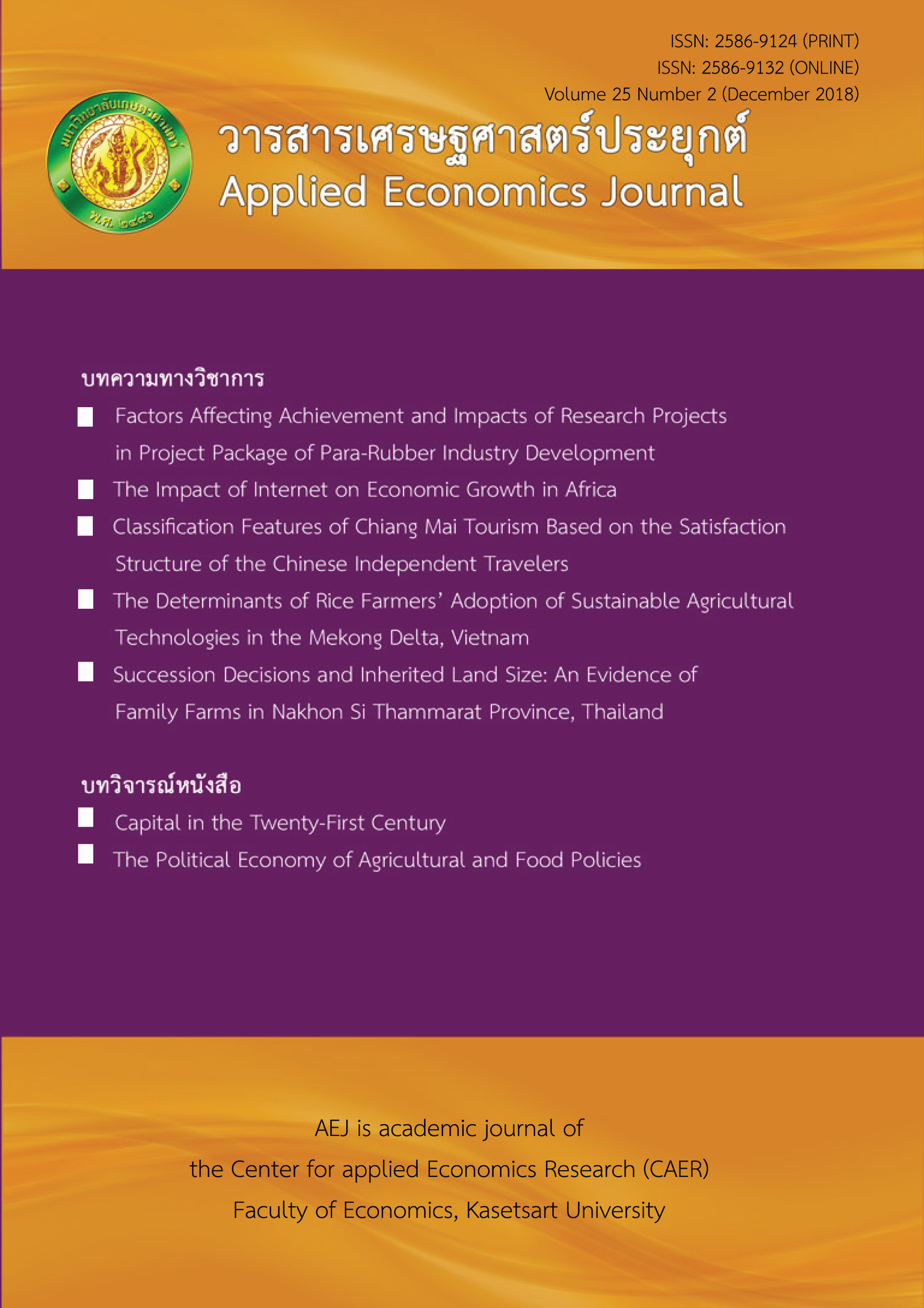Classification Features of Chiang Mai Tourism Based on the Satisfaction Structure of the Chinese Independent Travelers
Main Article Content
Abstract
This article classifies Chiang Mai tourism attributes following the structure of Chinese independent travelers’ satisfaction. A three-factor structure of customer satisfaction and a penalty-reward analysis (PRA) are applied to analyze the data collected from the interviews with 524 Chinese independent travelers in Chiang Mai. The results from the study indicate that hospitality of local people, nightlife and night activities, walking street, and coffee shop are classified as basic tourism attributes that Chinese independent travelers expected to meet when traveling to Chiang Mai. Reasonable prices, temple/historic sites, restaurants/bistros, shopping and local transportation are important factors contribute to the overall satisfaction of this group of tourists. Finally, Chiang Mai’s city atmosphere, spa/massage, accommodation, cleanliness (include hygiene), and safety are factors that reinforce Chiang Mai’s tourism competitive advantage in Chinese independent travelers market.
The different size of impact of each attribute leads to the suggestions for policy makers for prioritizing hospitality of local people and reasonable prices. Without these features, Chinese independent travelers are not satisfied with Chiang Mai. Simultaneously, tourism authorities have to look after Chiang Mai’s atmosphere because it has the highest effect in increasing Chinese independent travelers’ overall satisfaction. It should be noted that the satisfaction gained from the excitement attributes cannot substitute the loss of satisfaction from an absence of the basic attributes.
Article Details
The paper is published under CC BY-NC-ND, in which the article is freely downloaded and shared in its original form non-commercially and its citation details are identified.

